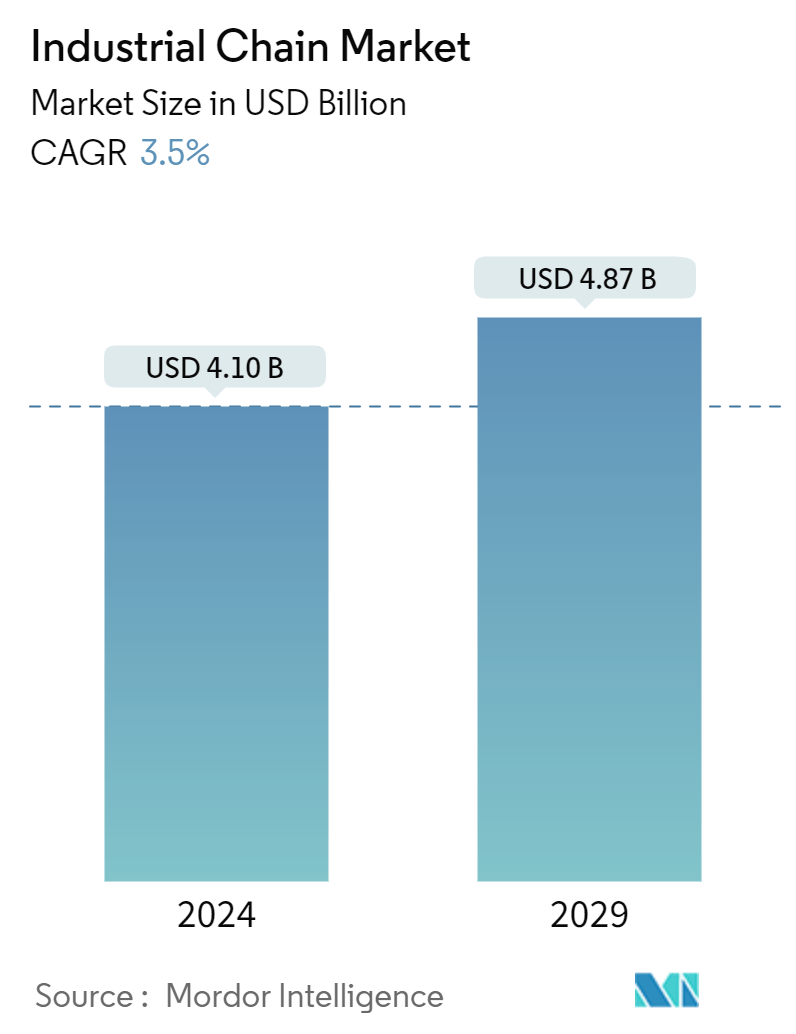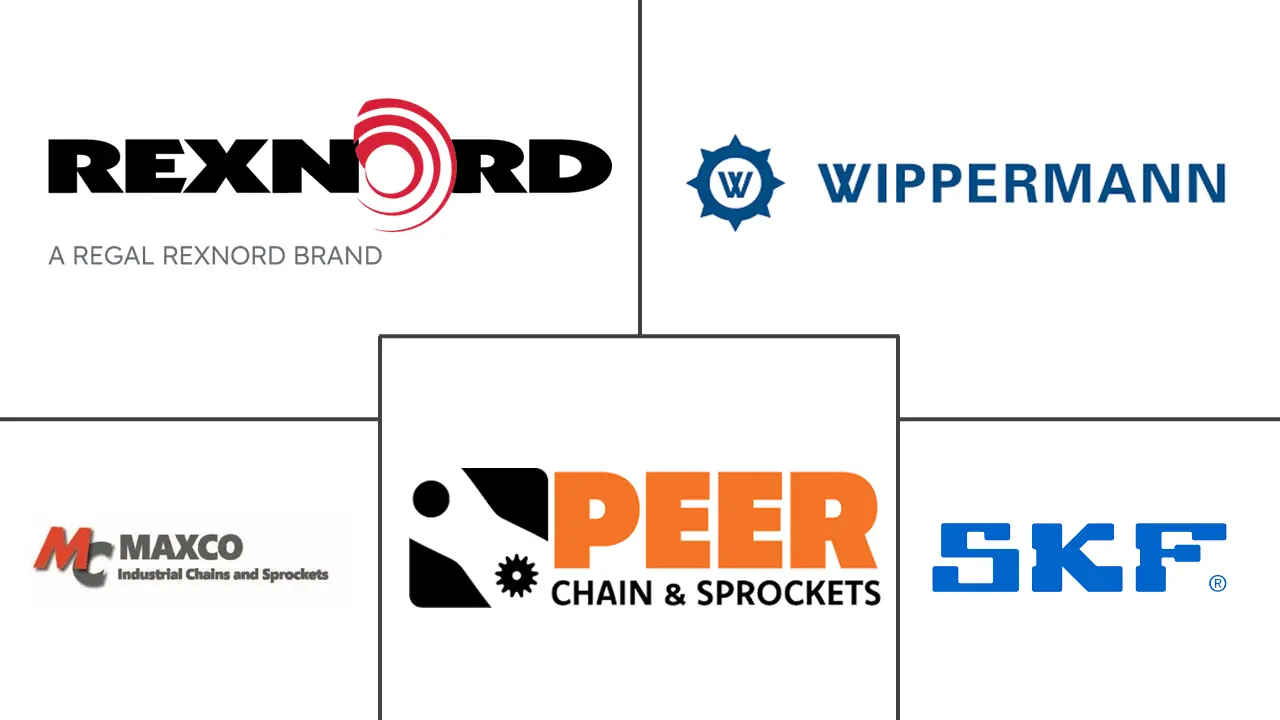Market Size of Industrial Chain Industry

| Study Period | 2019 - 2029 |
| Market Size (2024) | USD 4.10 Billion |
| Market Size (2029) | USD 4.87 Billion |
| CAGR (2024 - 2029) | 3.50 % |
| Fastest Growing Market | Asia Pacific |
| Largest Market | North America |
Major Players
*Disclaimer: Major Players sorted in no particular order |
Industrial Chain Market Analysis
The Industrial Chain Market size is estimated at USD 4.10 billion in 2024, and is expected to reach USD 4.87 billion by 2029, growing at a CAGR of 3.5% during the forecast period (2024-2029).
- As manufacturing industries grow to meet the increasing consumer demands, the importance of efficient and reliable industrial chains becomes paramount. These chains ensure the smooth operations of machines, boosting production capacity. The automotive industry has ramped up production with the rising demand for electric vehicles (EVs). Manufacturers, including Tesla and traditional automakers, are enhancing their production lines, heavily relying on industrial chains for both assembly and material handling.
- Owing to the adoption of automated systems in several industries, the demand for high-quality industrial chains that can endure rigorous operational challenges intensifies. Technological advancements in chain materials and design are paving the way for more efficient production processes. In the realm of consumer electronics, companies like Apple depend on automated assembly lines, underscoring the need for precise and durable industrial chains. Innovations, such as self-lubricating chains, not only cut down maintenance needs but also bolster operational efficiency.
- Since Industry 4.0 is on the rise, smart technologies are increasingly embedding themselves into the fabric of manufacturing. For instance, Siemens employs IoT-enabled chains that deliver real-time performance and wear data, facilitating predictive maintenance and significantly reducing downtime. Rapid industrial growth is evident in countries like India and Vietnam. Manufacturers in these nations are turning to industrial chains in sectors like textile production and electronics assembly, aiming to boost productivity and align with international standards.
- Investing in high-quality industrial chains, particularly those tailored for specialized applications, often comes with a hefty price tag. Such costs can pose a challenge for small and medium-sized enterprises (SMEs) contemplating an investment in advanced systems. For instance, a modest manufacturing firm might think twice before splurging on high-performance chains for its automated assembly lines, leaning toward more affordable options that might compromise efficiency and longevity.
- The ongoing Russia-Ukraine War is likely to drive up raw material prices, a consequence of sanctions and diminished availability. These heightened costs are subsequently transferred to both manufacturers and consumers. Firms dependent on Ukrainian steel or Russian raw materials could see a surge in procurement costs, thereby squeezing their profit margins.

